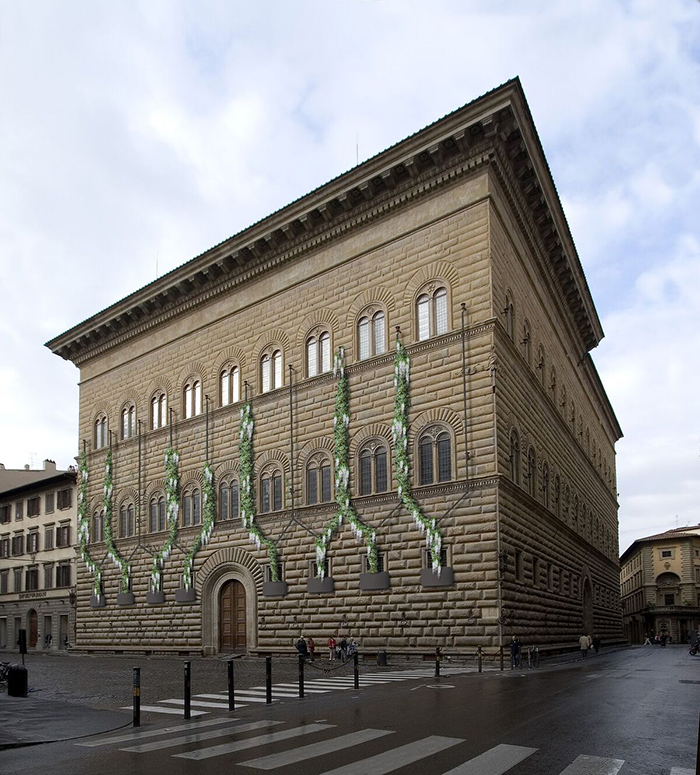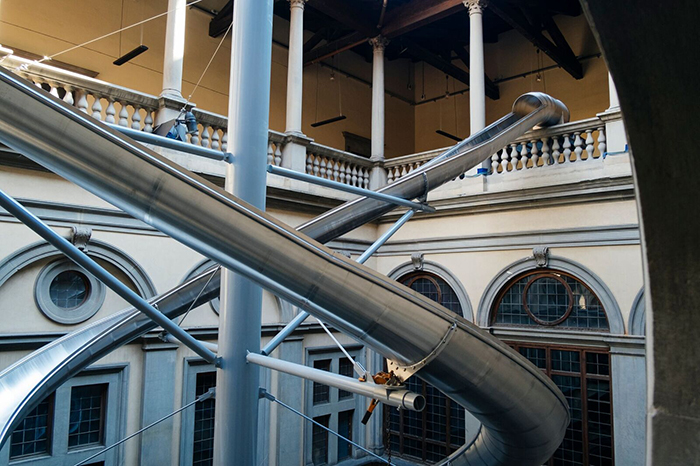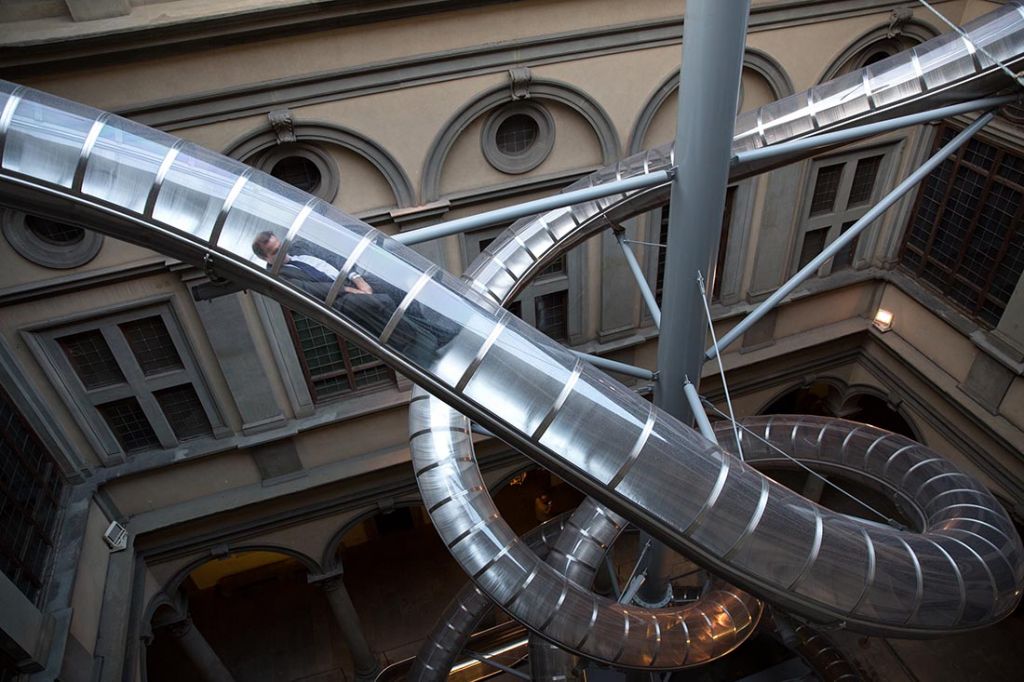German artist Carsten Höller and plant neurobiologist Stefano Mancuso are partnering up to add a whimsical new installation to Palazzo Strozzi; Florence’s famous renaissance palace.
Aiming to produce new understandings of human interactions with nature, the Florence Experiment has converted the Palazzo Strozzi facade and courtyard into an experiment. Interestingly, this monumental installation merges between art and science, as the project explores the impact of human emotion on plant growth.
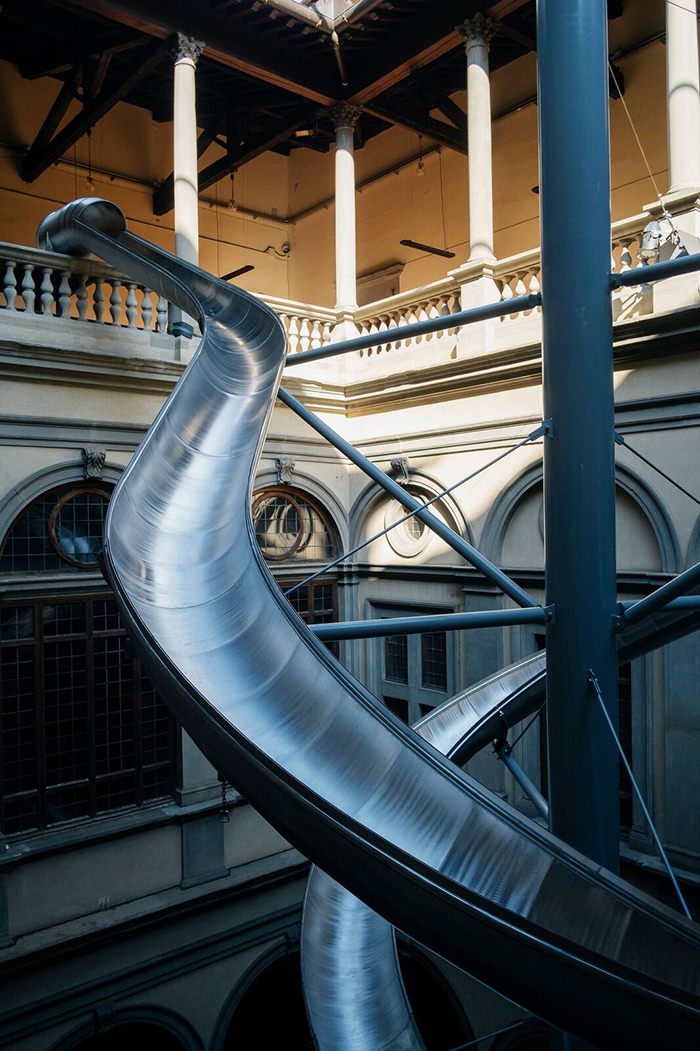
Image courtesy of Palazzo Strozzi
Consisting of elegantly interweaved spiral slides, the Florence Experiment extends 20 meters, transporting people from the second-floor terrace to the ground-floor courtyard. Participants shall be handed a plant before sliding to later undergo a process of “live analysis”. Each plant will be transported to a laboratory where its photosynthetic parameters and volatile molecules will be measured by scientists.
The Florence Project performs the essential function of linking the indoor and outdoor spaces in Palazzo Strozzi, making visitors look at ecology with a new perspective.
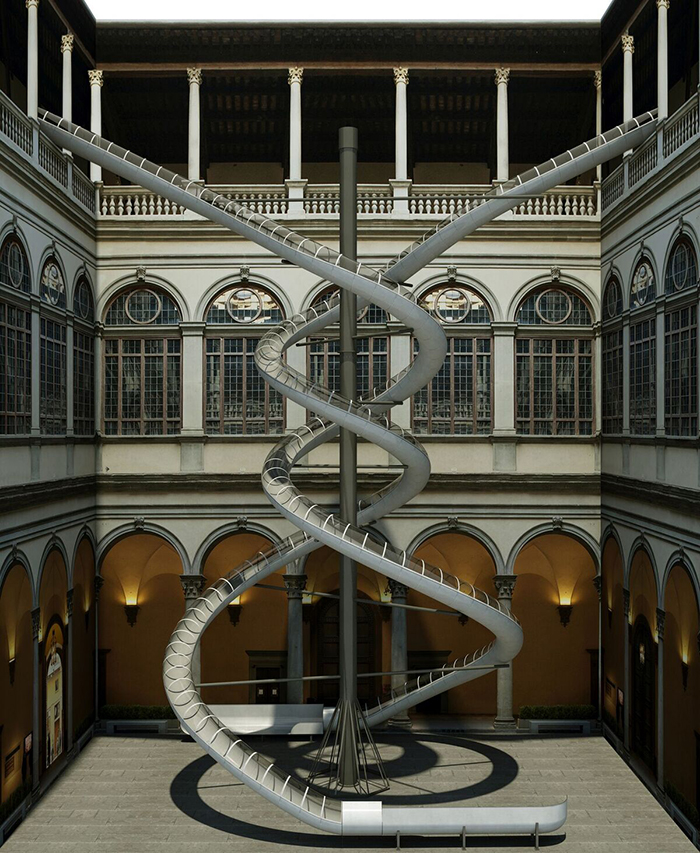
Image courtesy of Palazzo Strozzi
Additionally, the laboratory will include a cinema that screens famous comedies and excerpts from horror films. These films are a part of the experiment as different volatile chemical compounds will be released as a result of the diverse reactions of the audiences.
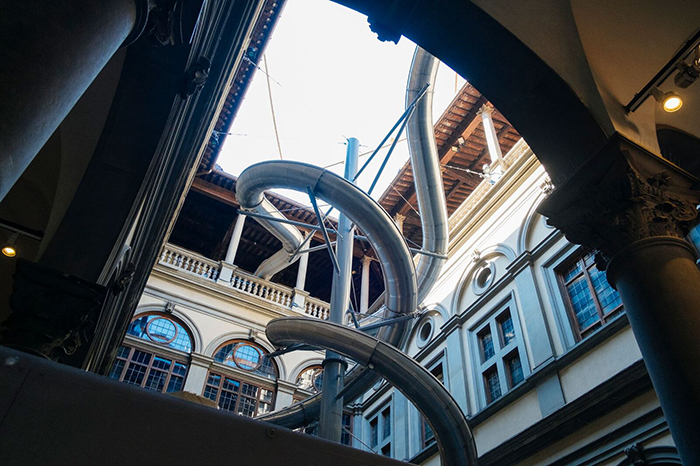
Image courtesy of Palazzo Strozzi
Passing through a system of tubes, the chemicals will have an influence on the growth of the beautiful wisteria plant vines that are creeping up on wires attached to the exterior. Whether the audience is stricken with terror or filled with happiness, their emotions are expected to induce a visible change in the growing direction of the wisteria plants.
According to The Florence Project’s official website, the Palazzo Strozzi organizes art exhibitions “ranging from the art of the ancient world via the Renaissance to the modern and contemporary era.”
Related Articles:
